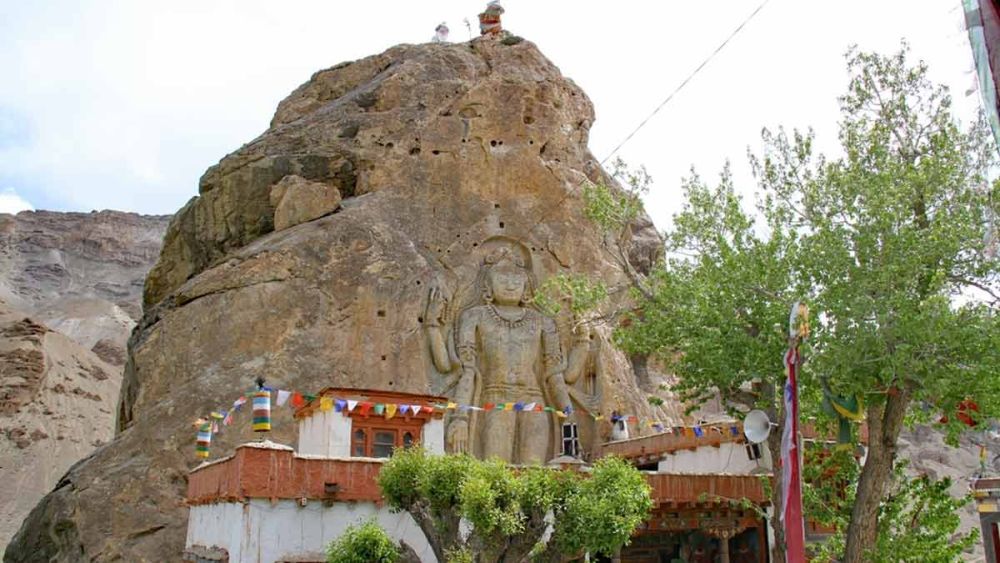

Nestled in the remote lands of Ladakh, Mulbekh is a small village located on the Srinagar-Leh highway, known for its rich cultural heritage and ancient landmarks. The history of tourism in Mulbekh is intimately linked with its most famous attraction, the Mulbekh Monastery, which houses the magnificent rock-carved statue of Maitreya Buddha.
Although Ladakh has been a crossroads for trade for centuries, modern tourism in Mulbekh began to emerge in the late 20th century. The area was traditionally visited by pilgrims and a few intrepid travelers interested in its unique blend of Buddhist and Muslim cultures. The Maitreya Buddha statue, believed to have been created around the 8th century AD, was a central point of interest for these early visitors. Its significance in Indic culture and Buddhism drew in both spiritual seekers and historians.
The tourism industry in Ladakh, and subsequently in Mulbekh, started gaining momentum after the Indian Government began to promote Ladakh as a tourist destination in the 1970s. This initiative paved the way for infrastructure development in the region, making it more accessible to tourists from around the world.
In 1974, when Ladakh was opened to foreign tourists, there was a surge in interest in the region's culture and geography. This led to a steady increase in visitor numbers to Mulbekh, who were drawn by the serene landscapes and the allure of ancient Buddhist teachings symbolized by the Maitreya Buddha. Along with the monastery, the Chamba statue also became a focal point for tourists, who sought to explore places beyond the well-trodden paths.
The onset of the 21st century witnessed a significant boom in Ladakh's tourism industry, with Mulbekh becoming a preferred stop for those on their way to Kargil or Leh. Improved road connectivity and the introduction of homestays in Mulbekh by the local community further boosted tourism.
Eco-Tourism and Cultural Tourism have taken the front seat in recent times, with emphasis placed on sustainable practices and authentic cultural exchanges. Travelers are now more inclined to engage in activities that promote environmental conservation and provide a deeper understanding of local traditions.
Today, the tourism industry in Mulbekh is embracing trends like adventure tourism, with hiking, mountain biking, and rock climbing being popular. There are also efforts to market the village as a place for spiritual retreats due to its tranquil environment and historic monastic sites.
Visitors are increasingly looking for immersive experiences, leading to the rise of homestays that offer a taste of local life. Travelers to Mulbekh can enjoy traditional Ladakhi cuisine and participate in cultural practices, such as local festivals and rituals which continue to be a significant draw.
Mulbekh's tourism history may be relatively brief when compared to other global destinations, but the region's ability to retain its cultural integrity while welcoming tourists from around the world has been key to its growing appeal. As the village and the region continue to develop sustainably, the history of Mulbekh's tourism industry stands as a testament to the village's unique charm and the power of responsible travel.